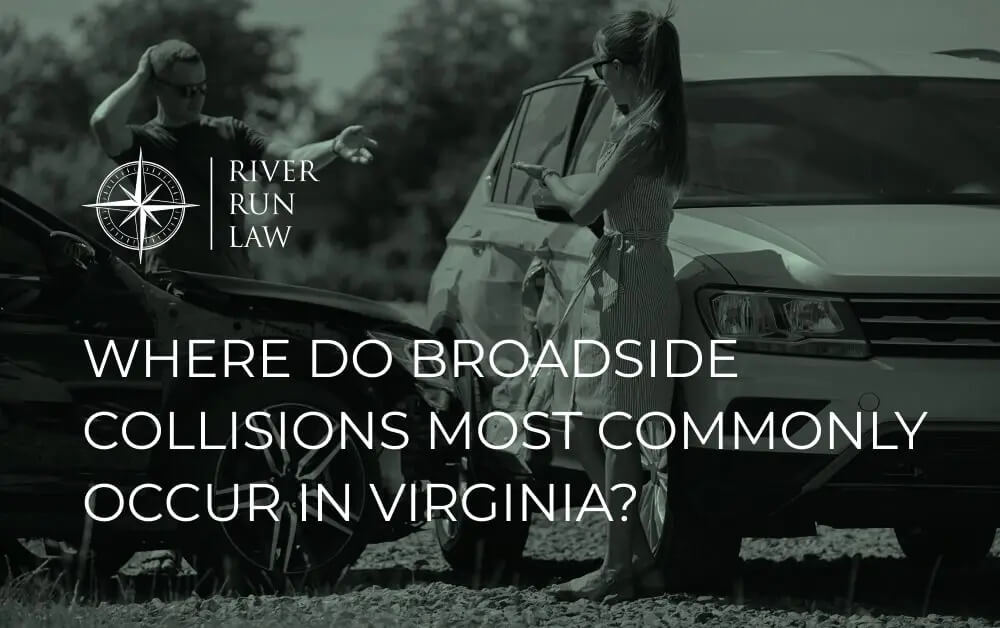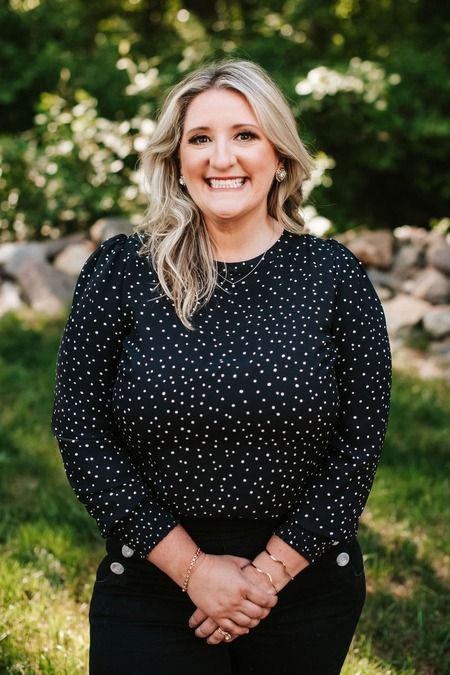
Broadside collisions, also called T-bone collisions, can happen in multiple places. One question we sometimes receive from prospective clients is where do broadside collisions most commonly occur.
The most common location for T-bone crashes is—not surprisingly—at an intersection.
Broadside collisions are common across Virginia roads and highways and can result in deadly injuries.
They are called T-bone accidents because the front of one vehicle hits the side of the other. This force can severely injure or kill occupants, especially if someone is sitting on the side of the impact.
In this article, the Richmond car accident lawyers at River Run Law will go over the details of broadside collisions.
If you have questions, please contact our office today.
Where Do Broadside Collisions Occur?
As we mentioned, intersections are the most common place where broadside collisions occur. That’s because an intersection design presents the perfect environment for these crashes.
You have multiple vehicles crossing paths, and some of these drivers aren’t paying attention.
In addition to intersections, broadside collisions can also happen at:
- Highway exit ramps;
- Multi-lane roadways;
- Parking lots; and
- Rural intersections, where one direction must yield.
If you sustained injuries in a broadside collision caused by another driver’s negligence, please get in touch with the Virginia car accident lawyers at River Run Law.
Why Intersections Are So Dangerous
The Federal Highway Administration (FHWA) previously released a brief dedicated to the dangers of intersections.
It states, “an intersection, by design, is a planned location where vehicles traveling on different highways may come into conflict.”
Anytime you have multiple vehicles coming together from different directions can be dangerous.
Some of the factors that make intersections so perilous include:
- Traffic is moving in conflicting directions;
- Drivers need to understand some traffic laws to know who has the right-of-way;
- Drivers must yield to other vehicles on the road; and
- The need to prioritize simultaneous demands on your visual perception, situational awareness, motor coordination, and judgment.
Intersections make up the majority of locations where traffic crosses in a “T” pattern. If you eliminate intersections, you reduce the number of broadside collisions.
Understandably, you might be wondering how it’s feasible to remove intersections. The answer is—roundabouts.
The Insurance Institute for Highway Safety (IIHS) says roundabouts are a safer alternative to intersections with traffic lights and stop signs.
Roundabouts improve traffic flow and make T-bone accidents unlikely.
Common Causes of Broadside Collisions
Numerous factors can lead to broadside collisions. Some of the most common causes include the following.
Distracted Driving
Anything that takes a driver’s attention off the road qualifies as distracted driving. Some drivers can be distracted by texting, changing the radio station, looking at the GPS, eating, or looking at someone in the backseat.
Failure to Yield the Right-of-Way
Drivers often must yield the right of way when entering an intersection with oncoming traffic. They could strike another vehicle if they don’t ensure the intersection is clear.
Failure to Stop at a Four-Way Stop
Some drivers voluntarily choose not to stop at a four-way stop, while others might miss seeing the stop sign and continue driving.
Running a Red Light
When some drivers see a yellow light on approach, they speed up, passing through the intersection when the light has turned red. Other times, some drivers risk the consequences by running a recently turned red.
Lack of Visibility
Not all intersections have ample visibility. There might be shrubs or trees obscuring a stop sign. A large truck could be parked where it’s not supposed to be. In these situations, you might have a claim against multiple parties.
Driving Under the Influence
Drivers who get behind the wheel of a vehicle when they are under the influence of drugs or alcohol put countless lives at risk. Intoxicated drivers tend to disregard the rules of the road, including stop signs and traffic signals.
Determining Fault in a Broadside Collision
To collect compensation for your injuries in a broadside collision, you must prove fault against the defendant. In most cases, that is the other driver who acted negligently.
You need to present evidence that shows:
- The defendant owed you a legal duty,
- The defendant breached this duty,
- The breach is what caused your injuries, and
- You have damages.
Building a solid case against the other driver is crucial in Virginia. It’s one of the only states with pure contributory negligence on the books.
The law bars you from recovery if you are even the slightest bit at fault for the collision. That means you will not receive any money for your injuries, even if you didn’t really do anything wrong.
Because insurance companies can deny claims if you are ever so slightly at fault, you must prepare yourself.
We highly recommend hiring a skilled Virginia car accident lawyer to protect your rights. If you attempt to handle a personal injury claim independently, you risk receiving no compensation.
Contact Our Virginia Car Accident Lawyers Today
If you are researching where do broadside collisions most commonly occur because you’ve been in an accident, contact the legal team at River Run Law.
We have years of experience assisting injured victims. We are passionate about helping you recover the compensation you deserve.
River Run Law is here to support you when someone else’s negligence results in a broadside collision. We’ll be there every step of the way and fight tirelessly on your behalf.
Contact our office today to schedule an initial consultation.
Where You Can Find Our Richmond, VA Office Location

